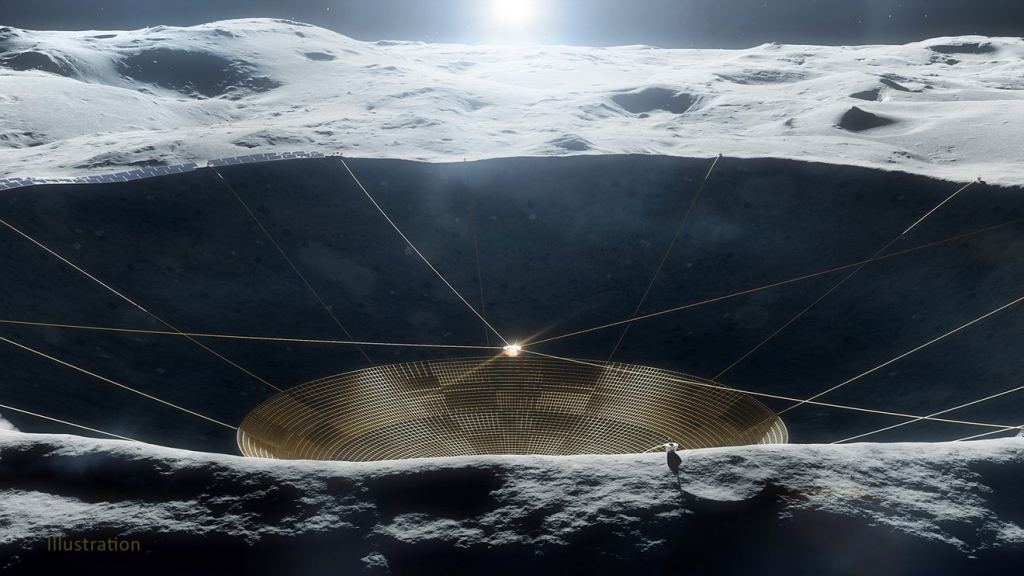A Lunar Farside Telescope Could Detect Exoplanets Through Their Magnetospheres
By Brian Koberlein
It’s difficult to do radio astronomy on Earth, and it’s getting harder every day. Our everyday reliance on radio technology means that radio interference is a constant challenge, even in remote areas. And for some wavelengths even the Earth’s atmosphere is a problem, absorbing or scattering radio light so that Earth-based telescopes can’t observe these wavelengths well. To overcome these challenges, astronomers have proposed putting a radio telescope on the far side of the Moon.

With no atmosphere to absorb light, the Moon provides a perfect view of the radio sky. The far side of the Moon is also shielded from all the radio signals of Earth. If we were to build a radio dish in a lunar crater, similar to the way Arecibo was built in a natural valley, then we would have the most sensitive radio telescope ever built. It would be so sensitive that we could use it to discover exoplanets.
Most of what we know about exoplanets comes from visible light, typically when an exoplanet passes in front of its star from our vantage point. Exoplanets can also be bright in infrared, and so the exoplanets we’ve observed directly are seen in infrared light. But there are times when an exoplanet can emit radio light. Jupiter, for example, is quite bright in radio due to its strong magnetic field and intense aurora. Some large exoplanets and brown dwarfs have strong enough aurora that we can see their radio glow from Earth.

Earth-sized exoplanets likely aren’t bright enough in radio wavelengths to see from Earth, but would they be visible from a lunar radio telescope? The answer to that question was recently published in The Astrophysical Journal. In this study, the team simulated the effects of a planet’s magnetosphere on the radio light it emits, specifically the aurora produced during the active periods of the planet’s star.
One of the things they found was that while visible light aurora tend to cluster at the magnetic poles of a planet, radio aurora occur farther from the poles and are more spread out. Radio aurora happen on Earth, but we can’t see them because Earth’s ionosphere absorbs the light. Our ionosphere would also block any radio aurora from Earth-like exoplanets. But a lunar observatory would be able to see these radio aurora, even when it comes from the dark side of the planet.
Based on the simulations of this study, the strength and stability of the magnetosphere could be determined from lunar radio observations. This is particularly important for exoplanets in the potentially habitable zone of a star. Earth is a haven for life because it has a rich atmosphere, which is a direct result of its strong magnetosphere. By studying the magnetospheres of exoplanets, we could learn whether they too have a rich atmosphere.
NASA is currently studying how we might build a radio telescope on the Moon. If it is built in the coming decades, we might finally see the aurora glow of a distant Earth.
Reference: Sciola, Anthony, et al. “Incorporating Inner Magnetosphere Current-driven Electron Acceleration in Numerical Simulations of Exoplanet Radio Emission.” The Astrophysical Journal 914.1 (2021): 60.
The post A Lunar Farside Telescope Could Detect Exoplanets Through Their Magnetospheres appeared first on Universe Today.

June 29, 2021 at 07:15PM
via Universe Today read more...

Post a Comment